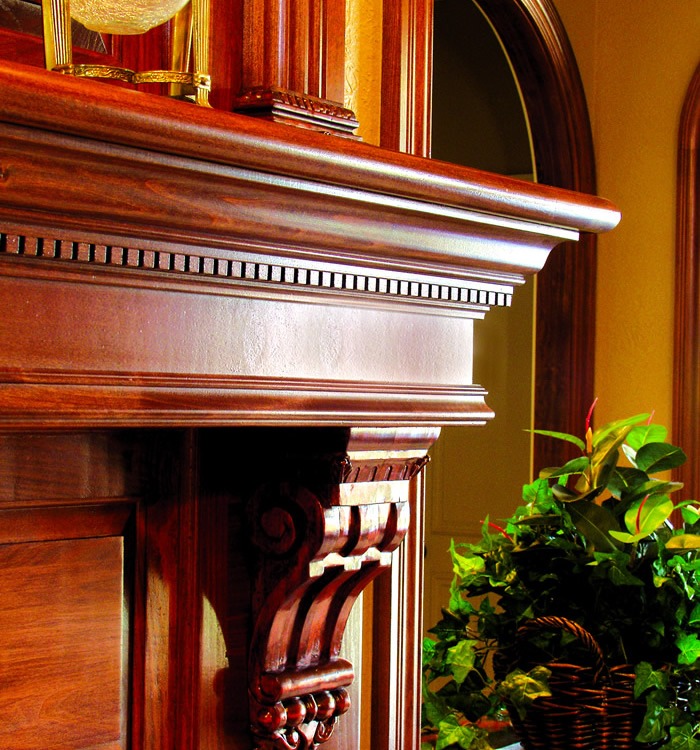Enhance a Home’s Character with Hardwood Architectural Details
Walk into any older home and you’ll always find a lot of hardwood details – wainscoting, crown moulding, fireplace surrounds, spindled staircases, even chair rails – because decorative trimwork used to be standard in new home construction. But after World War II, builders began reducing the amount of trim, using just enough to cover gaps around windows, door frames and between walls and floors. Unfortunately, that cost reducing practice continues with most new home construction.
As a result, today’s rooms often appear plain and featureless, lacking the warm ornamental details that would otherwise provide architectural character. But they don’t have to be plain. Enhance the character of your home by installing or upgrading its trim. It can be as easy as it sounds. Consider some of these cost-effective ways to add hardwood details to your home.
Wainscoting
Wainscoting is a type of paneling most often used to decorate the lower three feet of a wall. It comes in different styles, from simple flat panels to a raised design or beadboard; is installed with nails, screws, glue or a combination of these and is usually topped with crown moulding or a chair rail. During colonial times it served to protect the bottom portion of a wall from water damage arising from a cracked foundation. Today, it continues to ward off damage – scratches, dings and the like – while adding warmth and great architectural interest to any room.
In living and dining rooms, dens and libraries, it adds a formal look, especially when finished in a dark stain or paint. A white finished wainscoting in a living room suggests more of the country cottage look. And the wall above the wainscoting panels can then be painted or wallpapered to achieve the desired look.
In bathrooms, including wainscoting is a great way to add architectural interest without having to totally remodel. It is most commonly featured as white beadboard, which creates a clean, crisp feeling and complements any accent color. And try it on the ceiling. It’s a great way to hide an old-fashioned textured ceiling without the bother of removing it.
Chair Rail
Chair rail is functional as well as decorative. It helps protect areas where chair backs might damage the wall. Various chair rail styles are available. They can be a single piece of wood, called a moulding profile, or two or more different mouldings can be combined to create a built-up profile.
Chair rails are often used alone, but are also used to top wainscoting to give it a clean edge. When teamed with wainscoting, it will have a groove underneath that allows it to be placed onto the wainscoting, so be sure to install the wainscoting first.

Photo courtesy of White River Hardwoods
Crown Moulding
Any moulding or group of mouldings installed between the wall and a ceiling is called a cornice. It provides a decorative transition between the wall and ceiling, and can improve the appearance of almost any room.
Crown moulding is the most popular cornice. It is a thin length of wood installed diagonally to the corner of the wall and ceiling. Like chair rails, crown mouldings can be a single piece of wood, or can be built up of a number of different profiles. Some cornices include details such as dentil blocks and other intricate features.
Since crown moulding is placed at an angle to the wall, the cuts needed to form corners are more complicated, so you might want to have it installed by a professional.
From Plain to Elegant
Redecorate by incorporating hardwood architectural details and see how wainscoting, chair rails and crown moulding create a greater sense of warmth and indeed enhance the beauty of your home. These easy and cost-effective additions will transform any room from plain and empty, to a richly textured, even elegant living space.



